Offerings> Section 3
Implementing Integrated Landscape Management and Finance
ILM takes many forms, ranging from climate-smart or agroecological landscapes to green growth corridors to integrated watershed management. All include common elements:
- An organized platform or partnership
- Agreement on long-term transformative landscape goals
- Multi-benefit land use and business practices
- Policies, markets and finance aligned with landscape goals
ILM is implemented through a collaborative and iterative process implemented over a long time scale (20+ years). The following resources provide practical guidance, tools, learning modules, and services to support LPs and the organizations collaborating with them to implement ILM and ILF.
Resources
Implementing Integrated Landscape Management and Finance
- Getting Started
- Going Deeper (Capacity Strengthening Learning Modules)
- The Landscape Finance Accelerator
- Terraso Digital Tools
- LandScale
Getting Started
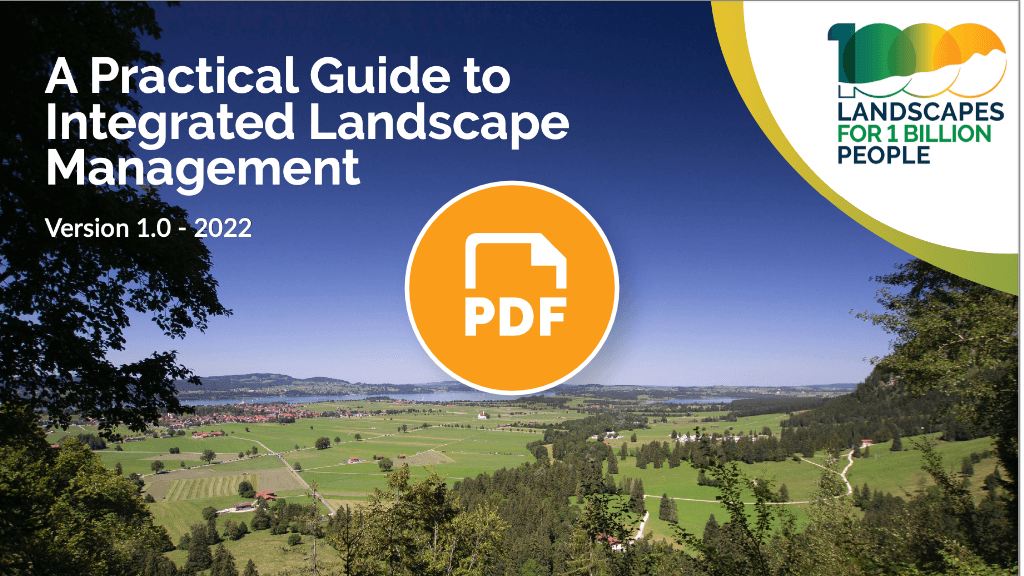
Interactive Practical Guide to ILM
This guide presents the fundamentals of ILM in a digestible and practical format. It walks through ILM’s five elements and illustrates two to four concrete outputs within each that LPs can produce to advance action to achieve their landscape goals. The guide also references case examples within each element. Static versions of the guide in English, Spanish, and Portuguese are also available on the 1000L website.
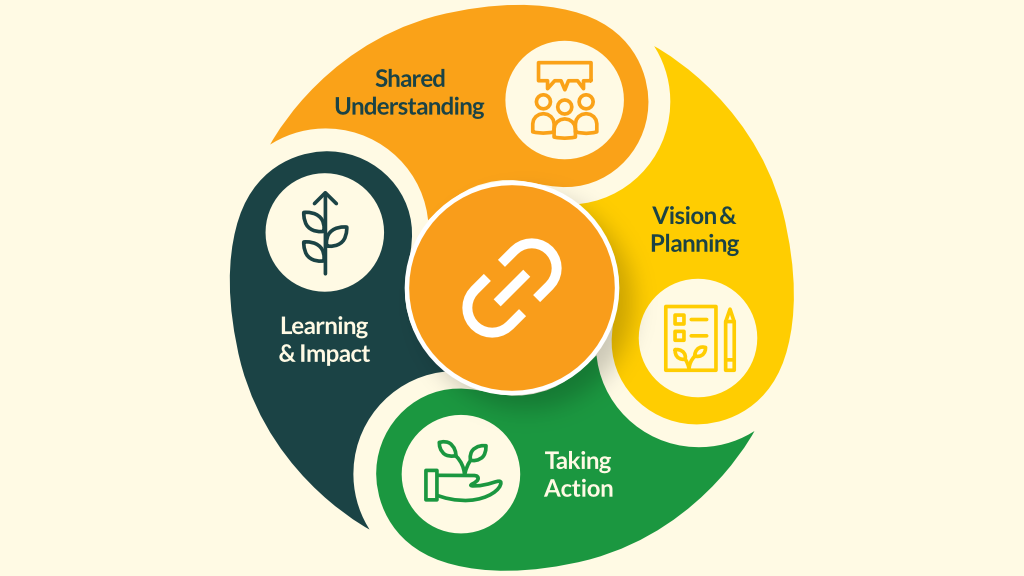
Interactive ILM Tool Guide
This interactive guide accompanies the practical guide in equipping landscape leaders with the fundamental tools they need to implement ILM.
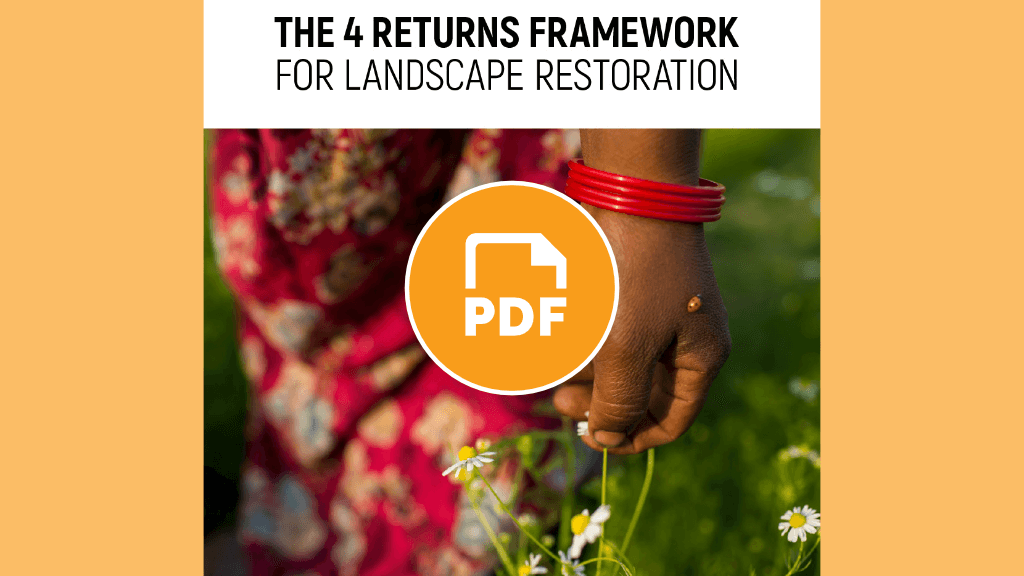
The 4 Returns Framework for Landscape Restoration
The 4 Returns Framework for landscape restoration is a practical and tested systems-change framework used by stakeholders to undertake a landscape approach. 4 Returns connects ecology, community values, spirit and culture, business, and long-term economic sustainability at the landscape level. The framework balances competing stakeholder demands and allows government, business, and communities to co-create and deliver a shared vision for a resilient landscape.
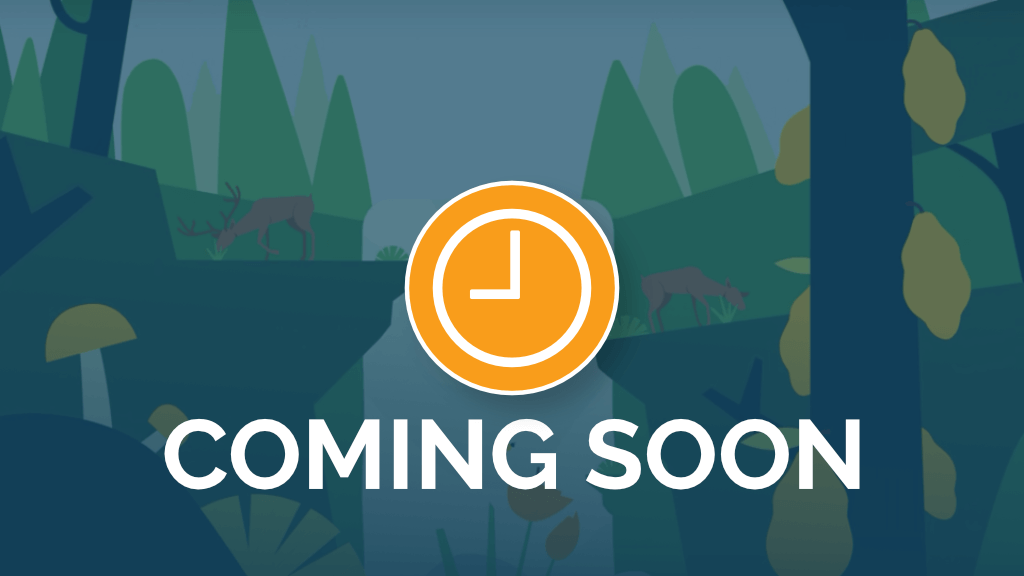
Situation and Exploration Tools (SET)
The Situation and Exploration tools help landscape leaders and other stakeholders assess the current situation of their landscape, laying the foundation for a successful LP. Divided into three parts, the set of self-guided exercises allows LPs to identify any previous experience with ILM, identify problems in the landscape, and plan for future collaboration.
Going Deeper
Capacity Strengthening Learning Modules
1000L is developing a comprehensive and locally adaptable set of learning modules based on the Integrated Landscape Management (ILM) process. These modules are designed to enhance the foundational skills of landscape practitioners (LPs), ensuring the quality and success of ILM practices within their landscapes. The curriculum includes practical case studies, interactive exercises, and a variety of tools to support effective implementation.
Each module offers a range of materials suitable for different needs, including facilitation guides, slide decks, and visuals in adaptable formats. The learning materials are designed for experienced facilitators who can confidently deliver sessions on unfamiliar topics using only a facilitation guide. In the future, we plan to offer additional support to help less experienced facilitators deliver these sessions effectively. We encourage you to adapt these materials to suit your specific context, including adding local stories and examples. Using the included prompts, feel free to customize them with your branding and organizational details.
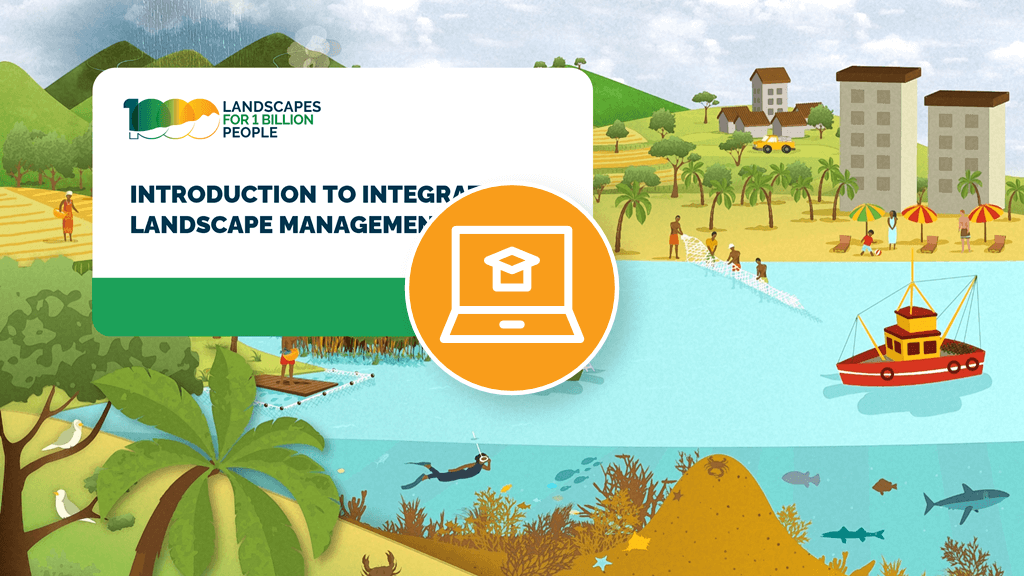
Introduction to Integrated Landscape Management
This module introduces the ILM framework to landscape practitioners who want to understand the basic concepts of the Integrated Landscape Management process. This module is available in two versions:
- In-person: This in-person, full-day session introduces the ILM framework and includes interactive activities for large and small groups. The ideal number of participants is 8-30.
- Online: While designed for online delivery, this online training on Intro to ILM has a structure that encourages interaction. The training consists of two 2-hour sessions delivered on a videoconferencing platform and is divided into Parts 1 and 2. The ideal number of participants is 8-12 to allow for significant discussion and interaction.
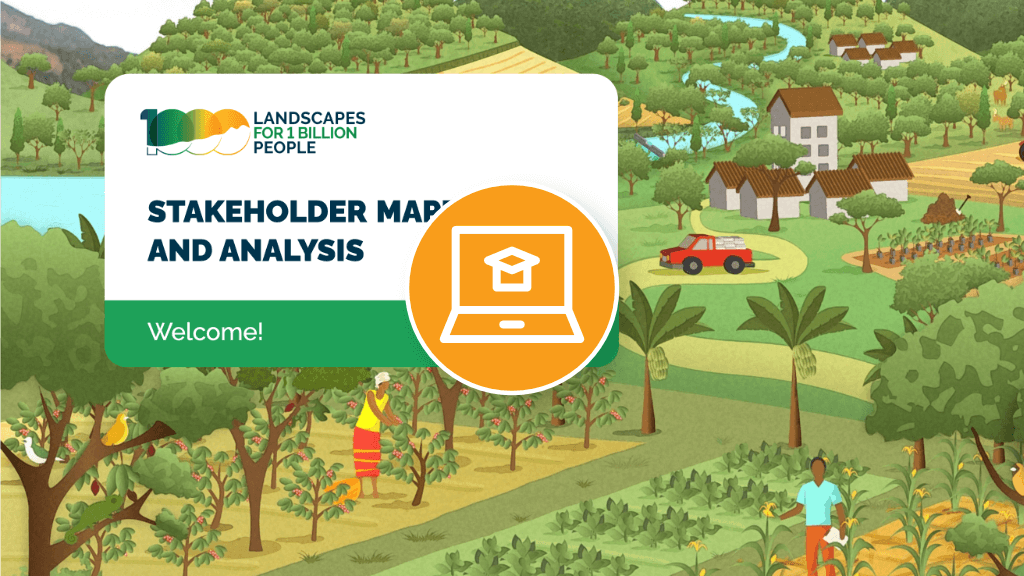
Stakeholder Mapping, Analysis, and Engagement
This module introduces Diversity, Equity, Inclusion and Justice (DEIJ), what this means in your landscape, and how to analyze and promote it across landscape initiatives. This module is available in one version:
Online: In this online 2-hour training, participants learn about the process of inclusive stakeholder mapping, analysis, and engagement. They are introduced to different tools to map key stakeholders in a landscape, learn about different engagement methods for diverse stakeholders in the landscape, and understand the steps to design a stakeholder engagement strategy. This is a 2-hour session on a video-conferencing platform. The ideal number of participants is 8-12.participants is 8-12.
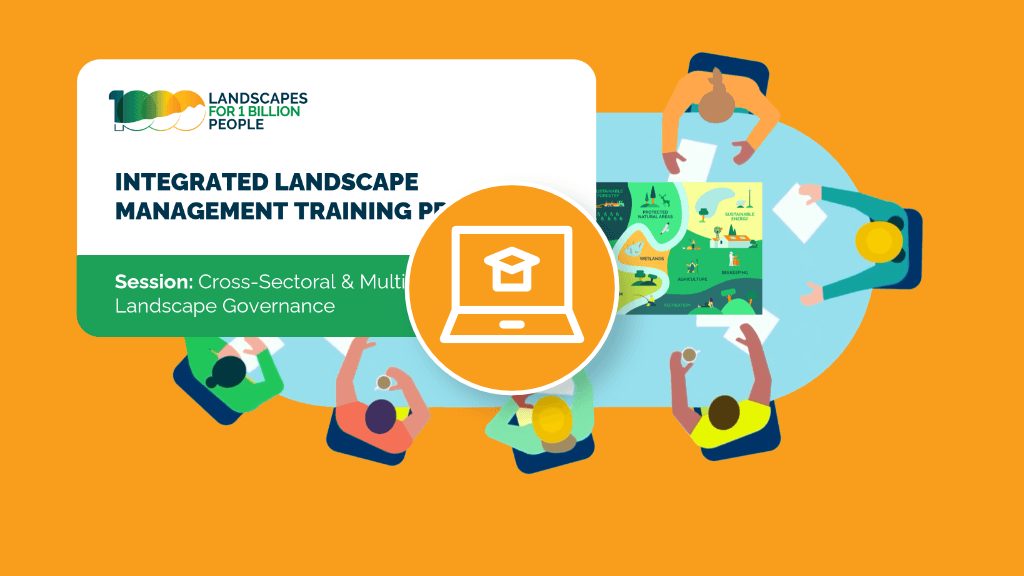
Landscape Partnerships: Cross-Sectoral and Multi-Stakeholder Governance
This module introduces participants to the heart of ILM: Landscape Partnerships. It explores the different functions of a LP’s possible organizational structures and explores various modalities of participatory landscape governance. This module is only available in one version:
Online:In this online training, participants learn about the role of LPs and their relevance in landscape governance. The training also describes the practical process for developing an appropriate LP agreement and possible organizational structures. It also explores the various key roles that partners can assume in landscape governance. This module was developed as a 2-hour session on a video-conferencing platform, and the ideal number of participants is 8-12.
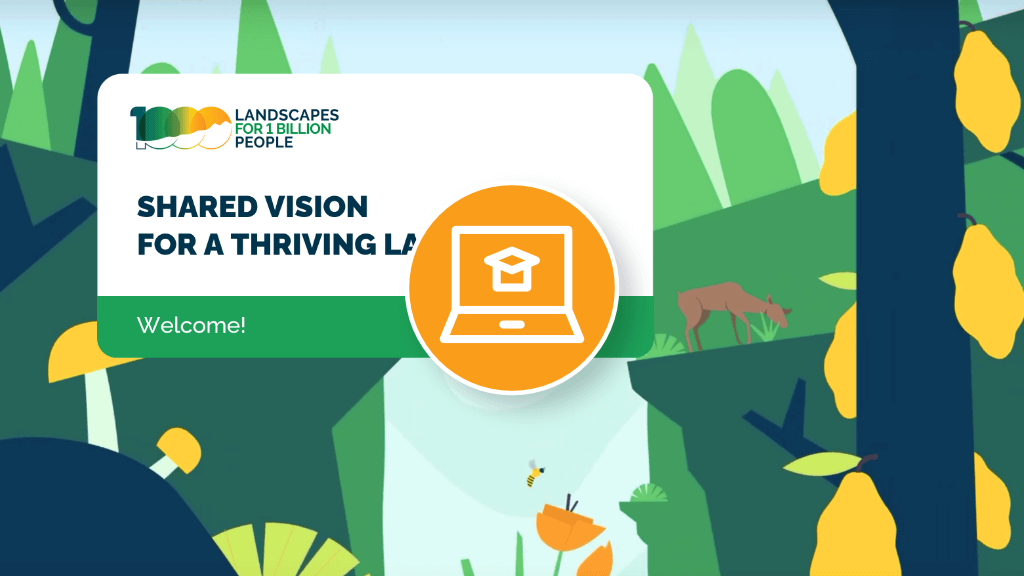
Shared Vision
This module focuses on the development of shared visions for LPs. A shared vision describes a partnership’s aspirations for its landscape on a generational time scale. It creates common ground for all stakeholders, enables future collaboration, and informs strategy development and landscape action planning down the line. This module is available in two versions:
- In-person: In this in-person, full-day workshop, participants co-create the first draft of a shared vision. Step by step, they learn about the concepts and apply the tools immediately. The workshop has interactive activities for large and small groups, focusing on sharing knowledge and finding common ground. This training works best when participants are a group of participants from the same landscape. The ideal number of participants is 8-25.
- Online: This 2-hour online training guides participants to understand what a “Shared Vision” is, including its “key ingredients” (areas, benefits, time frame). Participants learn how to facilitate a process to develop a shared vision in their landscape. This was developed as a 2-hour session on a video-conferencing platform. The ideal number of participants is 8-12.
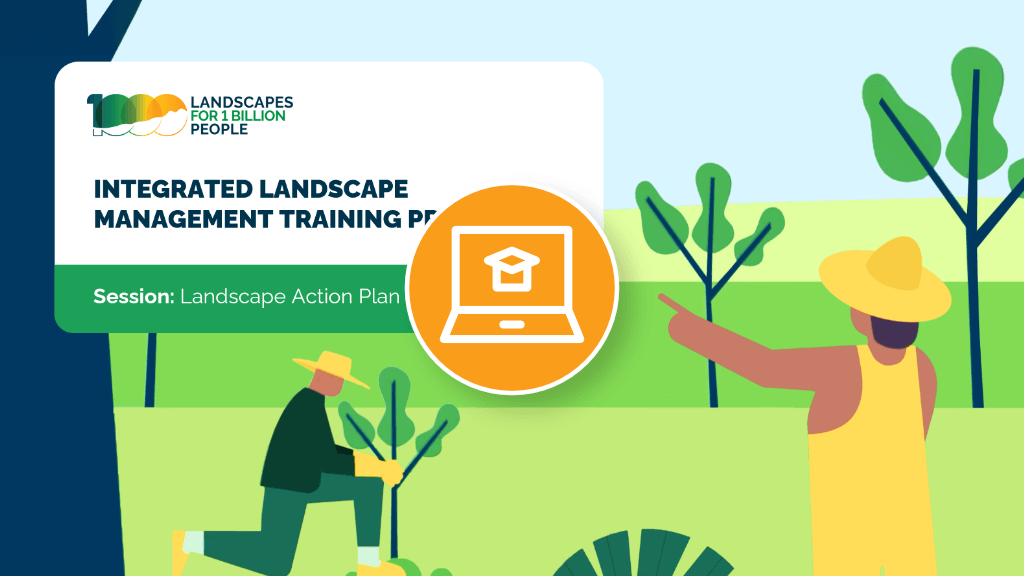
Landscape Action Plans
This module introduces the processes and tools for landscape action planning, which is crucial for translating higher-level landscape visions and strategic goals into practical activities and tangible results on the ground. This module is only currently available in one version:
Online: This online training helps participants understand Landscape Action Plans (LAPs) and their importance in initiating landscape action guided by a shared vision and strategy. Participants will learn tools for developing their LAPs and see examples from existing landscapes in Latin America. The training is a 2-hour session on a video-conferencing platform, ideally with 8-12 participants to allow for significant discussion and interaction.

Landscape Narratives
Landscape narratives are the collective and diverse stories, histories, and interpretations that define and give meaning to a specific landscape. This module helps participants understand the value of communicating their landscape narratives to both internal and external audiences and explores different formats and mediums of storytelling that would be suitable for their context. This module is only currently available in one version:
In-person: This in-person, full-day session introduces landscape narratives as powerful tools for effective landscape communication. Participants will explore the relevance of these narratives, the various formats they can take, and how to collaboratively build them to express a landscape’s identity and engage with both local and external stakeholders. The session includes interactive activities in both large and small groups, focusing on sharing experiences and developing a common language through communication exercises. This training is most effective for existing members of a LP who are working together to develop their communication strategy. The ideal number of participants is between 8 and 25.
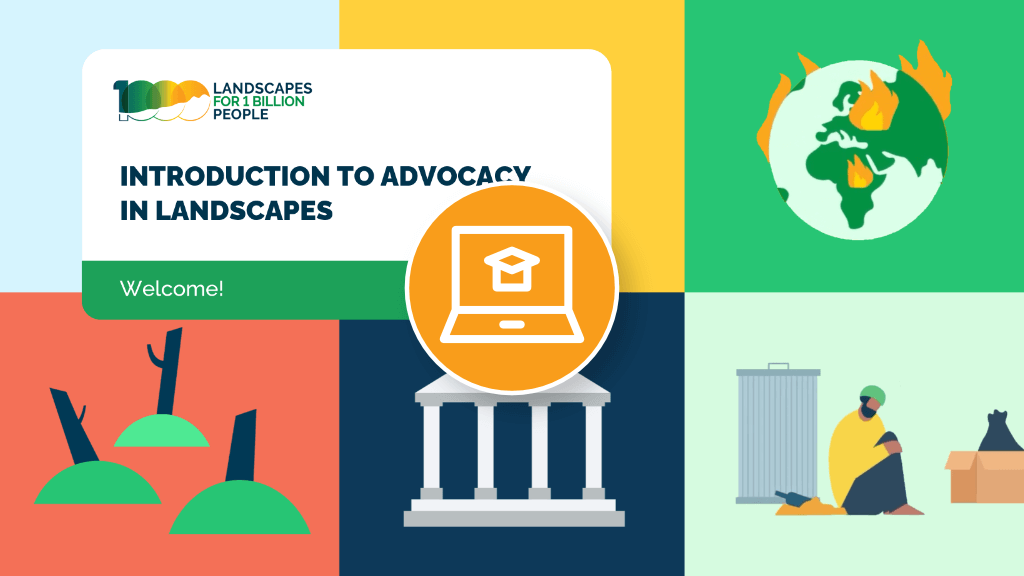
Advocacy for ILM
This module equips participants with a fundamental yet practical understanding of advocacy and how it can be leveraged to support their long-term sustainability goals within their landscape. This module is only currently available in one version:
In-person: In this in-person, full-day session, participants will explore advocacy’s potential as a key process for advancing the landscape’s strategic goals. The workshop features numerous group activities, allowing diverse stakeholder representatives to collaborate as a team towards a common goal: creating an advocacy action plan. This approach helps break down siloed thinking. The ideal number of participants is 8 to 25.
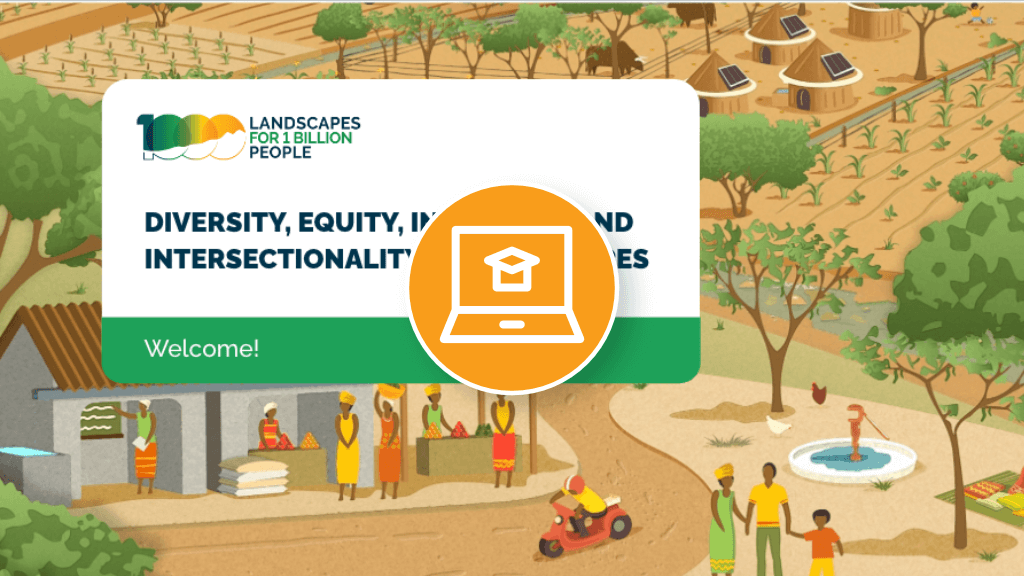
Diversity, Equity, and Inclusion in Landscapes
This module introduces Diversity, Equity, Inclusion and Justice (DEIJ), what this means in your landscape, and how to analyze and promote it across landscape initiatives. This module is available in two versions:
- In-person: This in-person, 2-day session equips participants with foundational concepts around DEI and grounds these to the realities of their landscape. Optionally, the session includes guidance on how to form a DEI committee to maintain inclusivity as a transversal aspect in all strategies, plans, and activities undertaken by the LP. This training works best when participants are a group of diverse stakeholders from the same landscape. The ideal number of participants is 8-25.
- Online: This 2-hour online training introduces the concepts of DEIJ as a cross-cutting part of ILM. It helps participants identify, analyze, and evaluate the conditions of DEIJ in their landscape and provides tools to develop a strategy for implementing it. This is a 2-hour session on a videoconferencing platform. The ideal number of participants is 8-12.
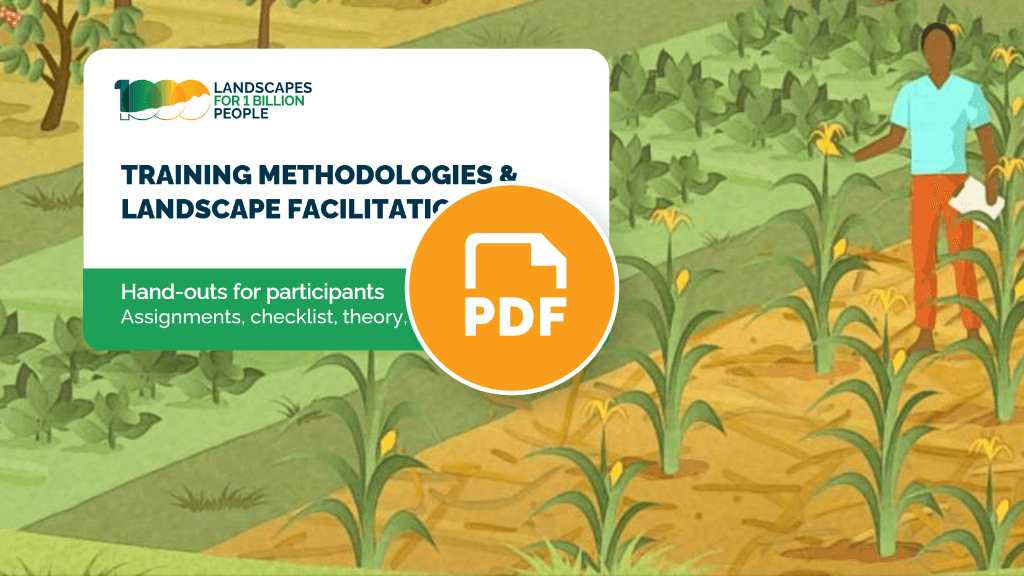
Facilitation for ILM
The effectiveness of ILM workshops relies heavily on the quality, skills and abilities of the facilitator(s) leading the sessions. This module was designed for landscape facilitators who would like to strengthen their facilitation skills and participatory training methods. For best results, this training should only be facilitated by Master Trainers who have participated in this training themselves and have 4+ years of coaching, training, and facilitation experience. This module is only currently available in one version:
In-person: This 5-day in-person training equips participants with an extensive toolbox of training and facilitation skills to implement the other ILM sessions. This training is for trainers, landscape facilitators, and landscape weavers who already deliver and contextualize face-to-face sessions and want to strengthen their capacity. The ideal number of participants is 12-25.
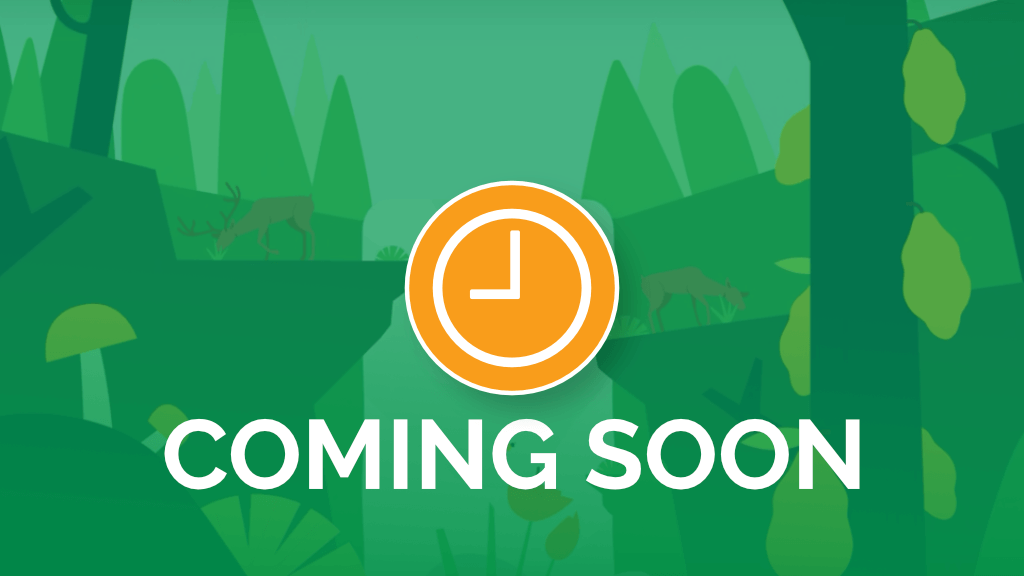
Introduction to Integrated Landscape Finance ( Coming Soon)
This learning module provides facilitators with the skills and information they need to begin conducting a landscape finance assessment with other stakeholders in the landscape. They will learn the fundamentals of landscape finance, recognize the financial assets within a landscape, and more.

Communication Strategies ( Coming Soon)
This learning module equips facilitators with the skills and knowledge necessary to develop an effective communication strategy for engaging with both internal and external stakeholders. It offers foundational theory on communication, assists participants in identifying their target audience, and guides them in tailoring their communication products. The training also provides a range of tools and resources to enhance the effectiveness of their communication efforts.
The Landscape Finance Accelerator (Coming Soon)
The Landscape Finance Accelerator (LFA) is a structured process and toolkit to help landscape partners identify and secure financial resources. The process involves assessing needs and gaps, mapping financial flows, and structuring finance across various forms of capital: public grants, private philanthropy, impact investments, commercial investments and payment systems. The LFA offers a systemic approach to projects, focusing on a wide range of investments and capital flows, including mentorship and access to extensive resources. LFA tools and resources include:
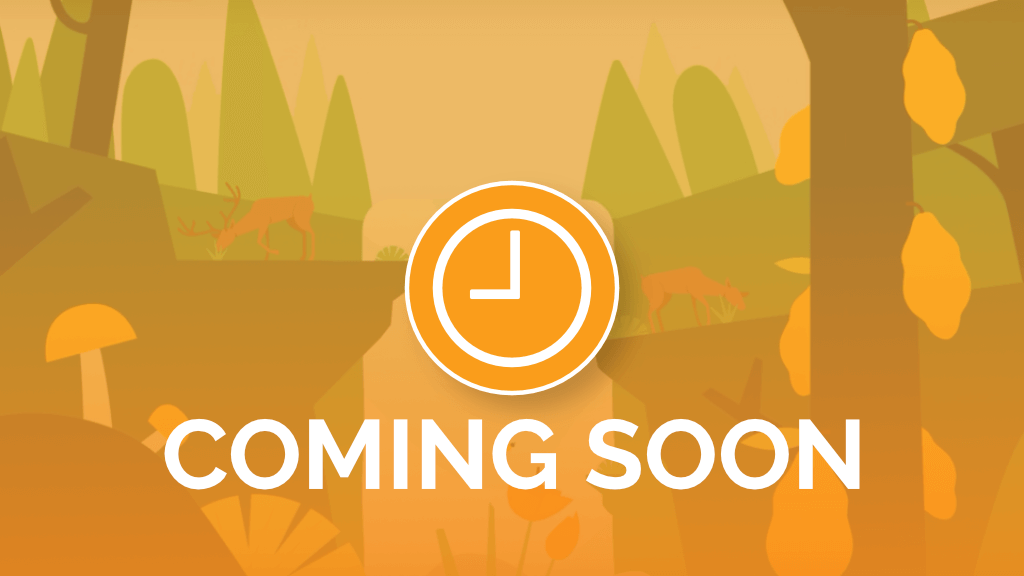
Lessons Learned and Guidance for Implementing the Landscape Finance Accelerator (Coming Soon)
This guide includes a summary of lessons learned from piloting the LFA in landscapes in Malawi, Mexico, Peru, and Vietnam as well as practical guidance to support the implementation of the LFA process.

LFA Toolkit (Coming Soon)
This toolkit facilitates the discovery, design, and development of finance solutions that support LPs to realize their goals for transforming the landscape. It is designed to support and integrate with the LFA process. Tools include:
- Landscape 360 assessment: A summary profile of the organization, priority projects, financial flows, and financial challenges/gaps within a landscape.
- Landscape partnership assessment: An assessment of the mission, organization, activities, and financing of the LP itself.
- Project portfolio overview: A portfolio of priority landscape projects that are present and/or in need of development in the landscape.
- Finance mechanisms overview: An identification of existing or potential financing instruments.
- Synthesis: A summary overview of project priorities and of their financing needs and gaps.

Terraso™ Digital Tools
Terraso is an open-source, mobile-first platform curated for local leaders: landowners, environmental managers, agribusiness, smallholder farmers, pastoralists, indigenous people, local government and investors. Terraso provides these actors with comprehensive, easy-to-use software and data tools to unite stakeholders, overcome conflicting agendas, and find common ground in a sustainable vision for their ecosystem. The platform reduces the time and cost needed to plan, develop and fund investable landscape initiatives. Terraso serves as the core infrastructure for integrating and delivering 1000L services. Terraso tools and services include:
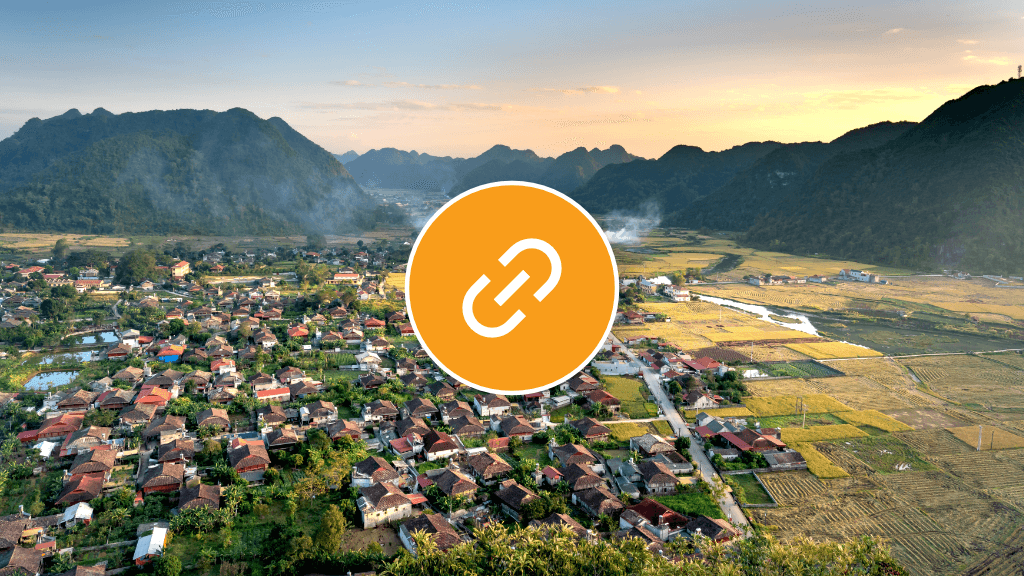
Landscape Profiles
A Terraso landscape profile is where data about the project and LP is stored. Members of a landscape can define and access an overview of the project area and all the relevant data collected and shared by members.
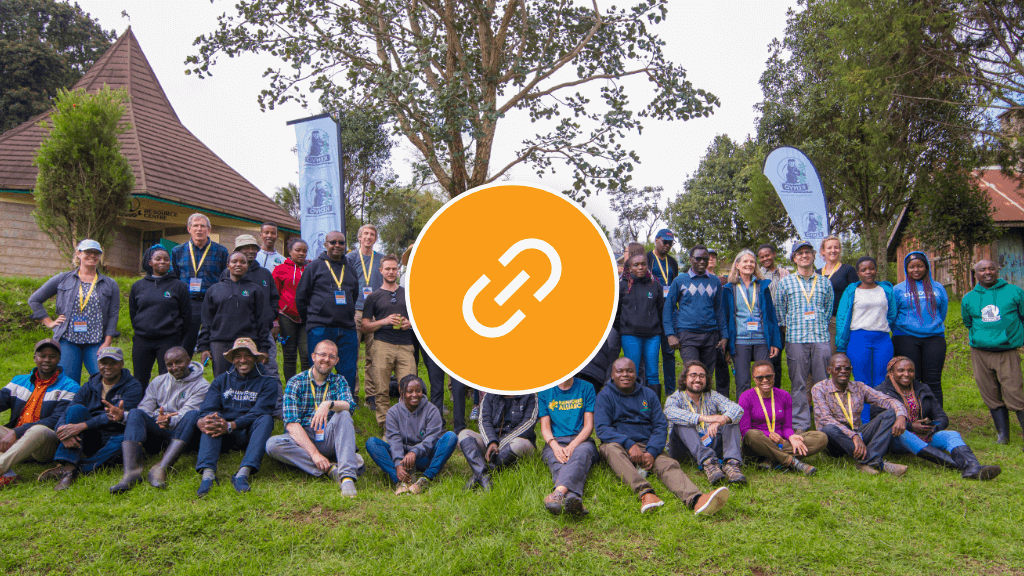
Landscape Groups
Groups allow Terraso users to connect within or outside of their landscapes. Groups are formed around common interests, allowing users to share and exchange information. They can be public or restricted to approved members.
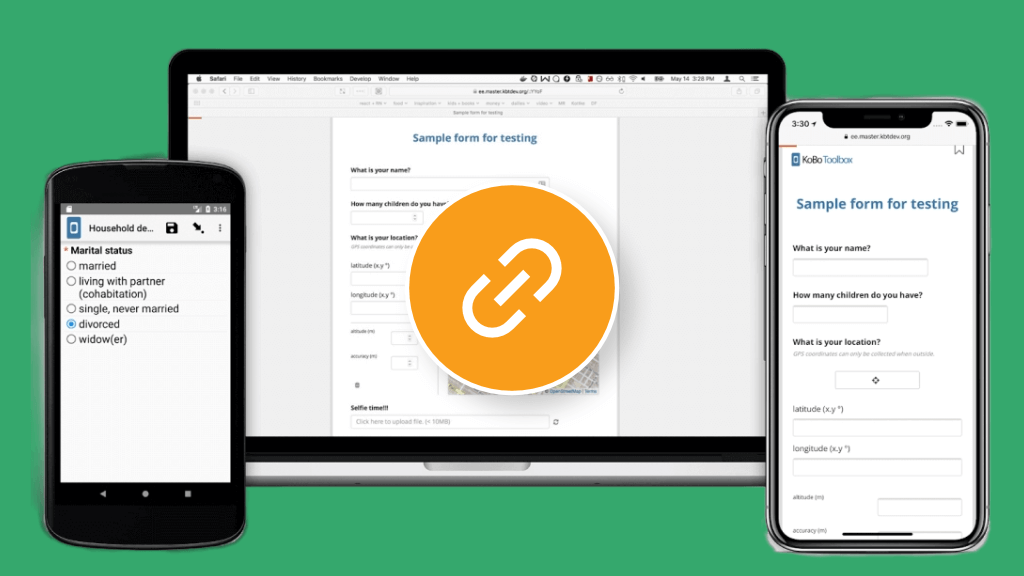
Data collection, storage, and sharing
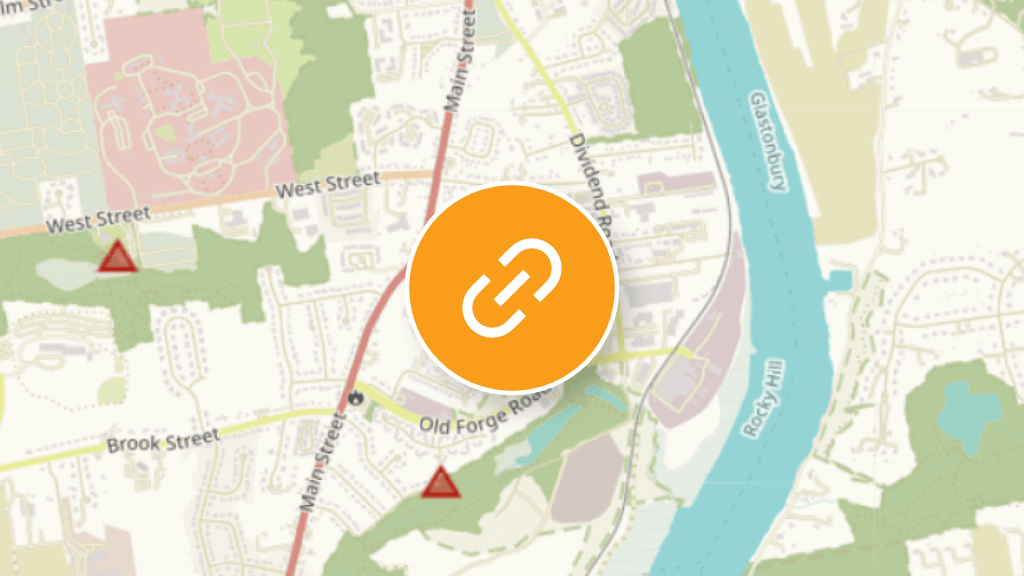
Data mapping
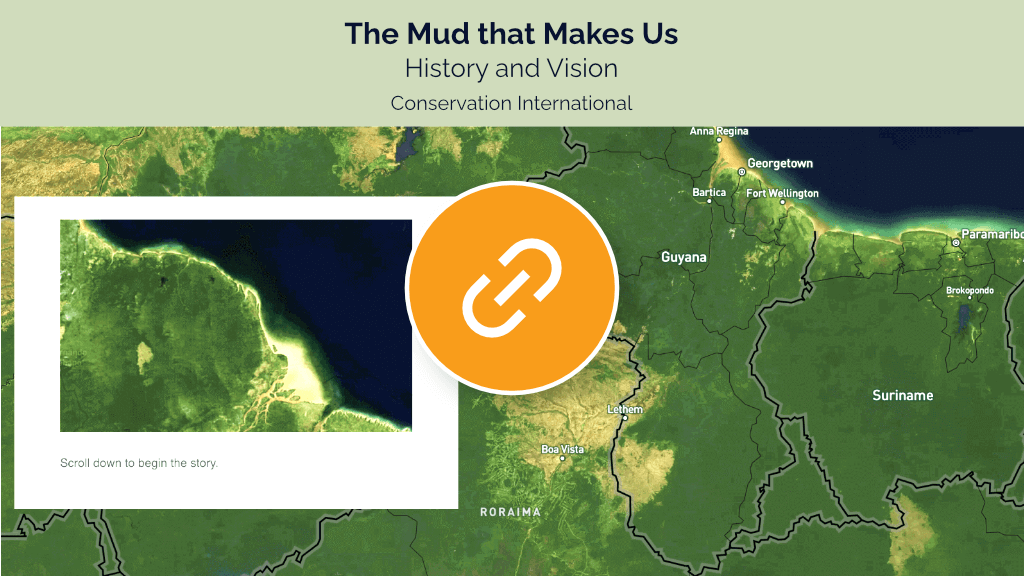
Landscape Story Mapping
This tool helps landscape partners to use maps, photos, videos, audio recordings, and narrative to curate an impactful story. These rich stories help landscape partners communicate their needs and successes with potential funders, current donors, potential volunteers, their community, or even the world. The tool has an accompanying tutorial and how-to guide for creating videos with smartphones.
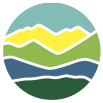
LandScale
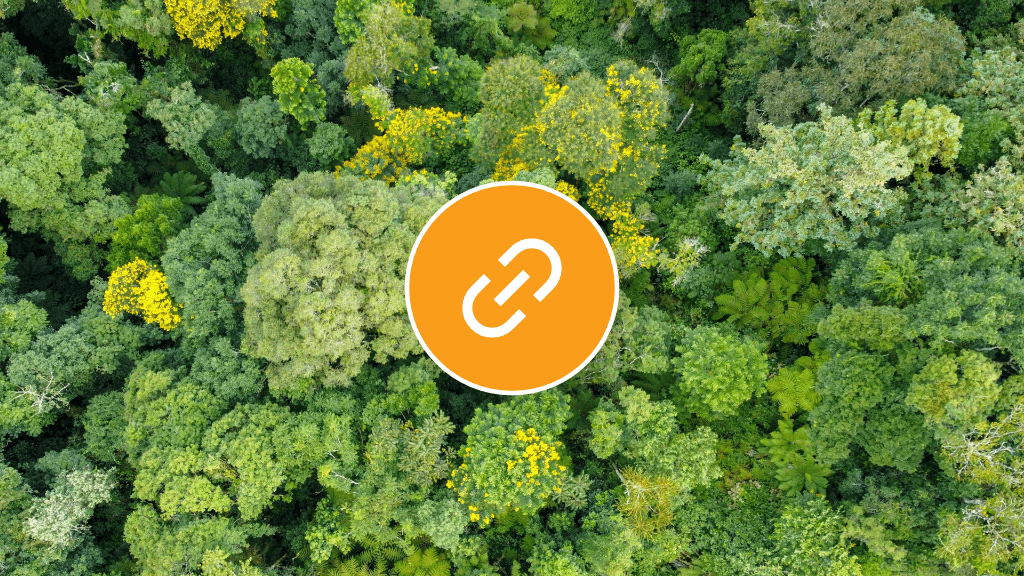
Landscape Assessment Tool
LandScale is a user-friendly assessment tool developed by the Rainforest Alliance, Verra, and Conservation International that generates landscape-level sustainability insights. By measuring the combined impact of all activities within landscapes – from ecosystem health and human well-being to governance and production – LandScale helps organizations deliver and credibly communicate sustainability at scale.